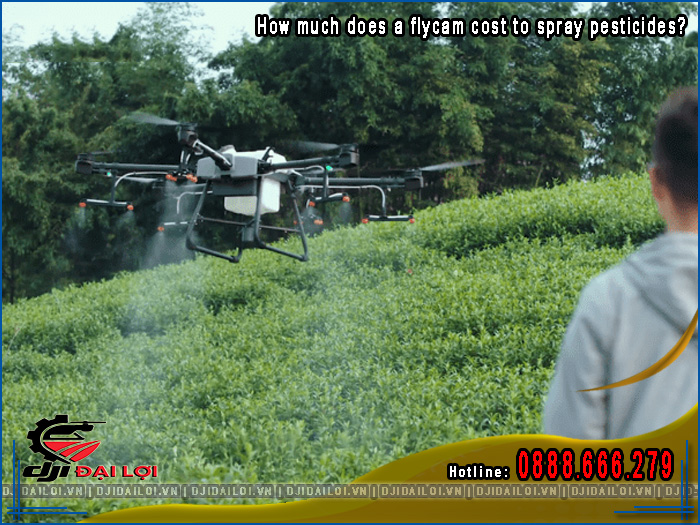With rising input costs and a growing need to reduce labor and toxic exposure, many farmers are exploring spraying drones as an efficient and safer solution. So what’s the price of a spraying drone, and is it worth the investment? To make the right choice, it’s crucial to understand the latest pricing, operating costs, and key differences among drone models.

Many people look only at the listed price without realizing it's influenced by various complex factors. Here are the main elements that impact the cost of a spraying drone:
Understanding these factors helps buyers assess the total cost, not just the upfront purchase.
Spraying drones vary widely in price. Here’s a comparison across three pricing tiers based on recent 2025 data from dealers in Ho Chi Minh City, Hanoi, and trusted e-commerce platforms.
|
Model |
Tank Capacity |
Price (VND) |
Key Features |
Best For |
|---|---|---|---|---|
|
Yifan P1 (China) |
10L |
59–68 million |
Remote control, semi-auto spraying |
Households, <2ha farms |
|
DJI Agras T10 |
10L |
92–110 million |
GPS RTK, auto return, precision spraying |
Small-medium farms |
|
XAG V40 |
20L |
145–165 million |
Obstacle radar, terrain map, AI control |
Large farms |
|
Yifan G3 Pro |
30L |
125–135 million |
4 centrifugal nozzles, GPS |
Cooperatives |
|
DJI Agras T20P |
20L |
155–180 million |
Multitasking, ultra-fast battery, camera |
Large-scale farms |
Each drone price range offers different value depending on farm size and usage purpose.
For frequent use and long-term planning, mid-range or higher drones offer significant labor savings and spraying efficiency.
The best drone is not always the most expensive. Consider your farm scale, spraying frequency, and operational capacity:
Drone pricing in Vietnam varies depending on whether it’s official, hand-carried, or refurbished:
|
Product Type |
Average Price (2025) |
Pros |
Risks |
|---|---|---|---|
|
Official w/ warranty |
90–180 million VND |
12–18 month warranty, official apps |
Higher price, costly accessories |
|
Hand-carried units |
75–150 million VND |
More flexible sourcing |
No official warranty |
|
Used / refurbished |
45–90 million VND |
Lower upfront cost |
Less durable, hard to repair |
Legal requirements for spraying drones in Vietnam:
Ask suppliers about licenses and compliance if you plan to rent drones commercially.
Initial purchase is just part of the investment. Here’s a 3-year total cost projection for three drone segments, assuming 2 uses/week across 8 months/year:
|
Cost Category |
Entry (Yifan P1) |
Mid (DJI T20) |
Premium (XAG V40) |
|---|---|---|---|
|
Initial purchase |
65 million |
110 million |
160 million |
|
2 extra batteries |
6 million |
10 million |
12 million |
|
Fast charger |
3 million |
5 million |
6 million |
|
Maintenance (3 years) |
9 million |
12 million |
15 million |
|
Parts replacement |
4 million |
6 million |
8 million |
|
Total 3-year cost |
87 million |
143 million |
201 million |
|
Monthly avg cost |
2.42 million |
3.96 million |
5.58 million |
Performance insights:
Clearly, drones are a worthwhile investment if used consistently and strategically.
The price of pesticide spraying drones in Vietnam ranges from 60 to over 180 million VND, depending on model, features, and brand. Entry-level drones suit individuals, while mid to high-end models are ideal for farms, cooperatives, or service providers. Choosing the right drone based on your farm’s scale ensures efficiency and faster ROI. Start with your real needs - not necessarily the most expensive drone, but the most suitable one.
Only if you're confident in inspecting technical issues. Used drones often break down, lack warranties, and are harder to repair.
DJI offers RTK positioning, multi-function cameras, higher durability, and official software support - justifying its higher price.
Early spring or autumn - major brands often offer discounts and you can use the drone throughout the spraying season.
Yes. You must register the drone with the Ministry of National Defense and only fly in permitted areas.
Not completely. Drones reduce labor by 60–70% but still require supervision, charging, chemical refills, and troubleshooting.
It ranges from 150,000–300,000 VND/ha depending on terrain, pesticide type, and season. Ideal for small-scale farms.